Youth Hunters Education – Getting Kids Started Right
Posted by Junior Shooters
By: Neil Smith
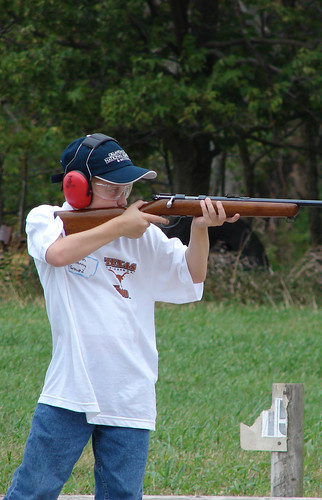 Imagine a group of young kids and teenagers arriving at an open field and putting their shooting, gun handling, Kansas Hunting laws knowledge, and Hunters Educational Skills to the test. That is exactly what happened at Echo Valley Range in Southeast Kansas (http://www.echovalleyrange.com) located outside of Dexter, Kansas the first Saturday of October, 2007. This event is hosted by a local group of volunteers known as the Sporting Friends of Cowley County (SFCC) utilizing grant money provided by Friends of the National Rifle Association (FNRA), range equipment from Echo Valley Range, rifles, shotguns and muzzle loading rifles belonging to SFCC and support from the Kansas Department of Wildlife and Parks Hunters Education Department. A small fee is charged to all those that attended to help with additional costs and they may bring their own firearms and bows if they wish to use them in the events. The intent is to have the kids arrive at the range ready to participate in all events and be scored utilizing equipment provided at the range complex. This is done so that anyone can participate and not have to worry about having all the necessary items, which for some, can be a great burden.
Imagine a group of young kids and teenagers arriving at an open field and putting their shooting, gun handling, Kansas Hunting laws knowledge, and Hunters Educational Skills to the test. That is exactly what happened at Echo Valley Range in Southeast Kansas (http://www.echovalleyrange.com) located outside of Dexter, Kansas the first Saturday of October, 2007. This event is hosted by a local group of volunteers known as the Sporting Friends of Cowley County (SFCC) utilizing grant money provided by Friends of the National Rifle Association (FNRA), range equipment from Echo Valley Range, rifles, shotguns and muzzle loading rifles belonging to SFCC and support from the Kansas Department of Wildlife and Parks Hunters Education Department. A small fee is charged to all those that attended to help with additional costs and they may bring their own firearms and bows if they wish to use them in the events. The intent is to have the kids arrive at the range ready to participate in all events and be scored utilizing equipment provided at the range complex. This is done so that anyone can participate and not have to worry about having all the necessary items, which for some, can be a great burden.
69 youth were in attendance at this year’s event. They were divided into two groups for awards and trophies; Junior Division, age eight to twelve and Senior Division, age thirteen to eighteen.
Then each individual was assigned to a group that went from event to event to participate. Kansas law requires anyone over the age of sixteen to possess a valid Hunters Education certificate to be able to purchase a hunting license. We open this event to any kid as young as eight so long as they are accompanied by a sponsor. Sponsors are required for all in attendance under the age of sixteen. Events that kids participate in and are evaluated and scored on are:
-
Hunters Education Safety Trail
-
Hunters Education Written Test
-
Shotgun Range
-
.22 caliber Rifle Range
-
.50 Caliber Muzzle Loading Rifle Range
-
Archery Range
Any shooter may bring their privately owned firearm or bow to use in these events. But those firearms and bows are inspected for safe operation and worthiness prior to being allowed on the range.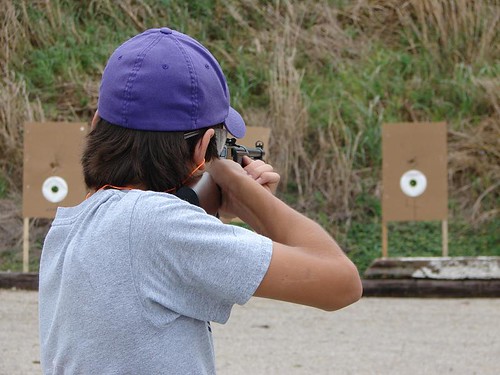
The Hunters Education Safety Trails? intent is to provide a realistic scenario, such as, You are getting ready to go hunting for pheasant in season. The individual being tested will then have to select which equipment is needed to go out and harvest the game. Including, which license, tags, or stamps that may be required. Permission to hunt from the property owner and a description of where they are allowed to hunt is provided. Through the use of pop-up wildlife and three dimensional decoys, placed along the safety trail, questions are asked of the hunter and they are scored as they walk along the trail. This is not only a test of the participant?s knowledge of safety and Kansas hunting laws, it also provides them the chance to evaluate their own hunting ethics. It also provides them a chance to learn while they are being tested. Kansas Hunters Education Instructors, along with retired and current Kansas Natural Resource Officers, evaluate and score those tested.
The Hunters Education Written Test consisted of written questions about hunting, safety, hunting ethics, wildlife identification and knowledge of Kansas hunting laws. This is considered by some of the kids as the hardest part of the course. 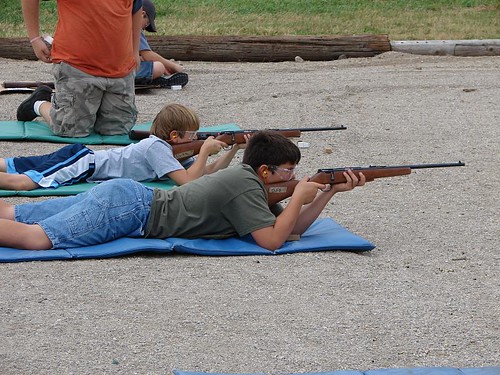 Due to the inexperience of some, (both young and older kids) and the lack of not having attended a Kansas Hunters Education Course, this score is used as one of the primary tie-breakers for ranking in the awards later in the day. We hope that these potential hunters and shooters will continue to go afield or to ranges and get more and more experience so that their knowledge base and scores will improve with each outing and score better at future events. This event was scored by Kansas Hunters Education Instructors.
Due to the inexperience of some, (both young and older kids) and the lack of not having attended a Kansas Hunters Education Course, this score is used as one of the primary tie-breakers for ranking in the awards later in the day. We hope that these potential hunters and shooters will continue to go afield or to ranges and get more and more experience so that their knowledge base and scores will improve with each outing and score better at future events. This event was scored by Kansas Hunters Education Instructors.
At our shotgun range, participants utilize 12 and 20 gauge shotguns and clay target throwers owned by the SFCC group with shooters using commercial field loads. 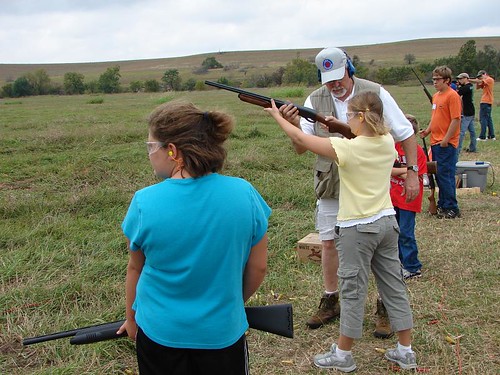 Even though they are only shooting blue rock targets, the throwers are set up to present in-coming, out-going and crossing targets for the shooter to engage. Any shooter that brought a shotgun that the club did not have ammunition for was required to bring new manufactured ammunition. No reloaded ammunition is allowed on the range for the competition due to safety concerns. We had some shooters using .410 bore and 16-gauge shotguns to engage their targets. Some shooters had never fired a shotgun before and were given a brief period of instruction at the range prior to being scored. This is done in the hopes that they at least will get a nice score for the event. Instructors were National Rifle Association shotgun certified and scorers were volunteers or sponsors that volunteered to help.
Even though they are only shooting blue rock targets, the throwers are set up to present in-coming, out-going and crossing targets for the shooter to engage. Any shooter that brought a shotgun that the club did not have ammunition for was required to bring new manufactured ammunition. No reloaded ammunition is allowed on the range for the competition due to safety concerns. We had some shooters using .410 bore and 16-gauge shotguns to engage their targets. Some shooters had never fired a shotgun before and were given a brief period of instruction at the range prior to being scored. This is done in the hopes that they at least will get a nice score for the event. Instructors were National Rifle Association shotgun certified and scorers were volunteers or sponsors that volunteered to help.
The .22 caliber rifle range is used to evaluate the shooter in three different shooting positions and shooting from distances of ten to twenty-five yards. Rifles and ammunition were provided by the sporting group and there were many shooters that brought their own rifles to use.
All of the club rifles are bolt action type with the majority of the personally owned rifles being semi-automatic along with a few lever actions also. The shooter would first shoot ten rounds at a target to check the accuracy of their rifle and make any sight adjustments as necessary. Then they would shoot for their score. The distances that they shot from were, seven, fifteen and then twenty-five yards. Positions were sitting supported, kneeling supported and then the prone position respectively. Targets utilized were three inch shoot-n-see targets pasted to a nine inch paper plate which was stapled to cardboard backing. This type of target was easy for them to see and for the range personnel to score.
Fifty caliber muzzle loading rifle range was probably the first time that most of the kids had ever shot or experienced this type of rifle. 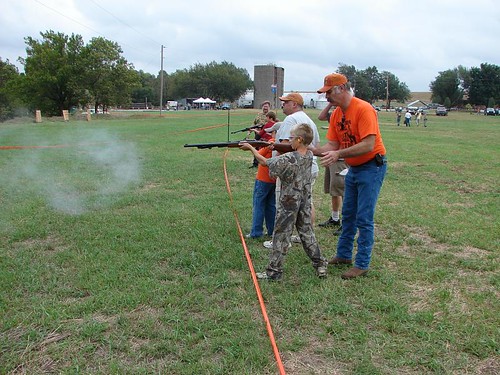 The club provided the few rifles that they owned and volunteers also brought along their own to supplement them with and provide a variety of sizes and weights for the shooters. Every group of shooters was given a safety briefing prior to handling any firearm. Also, a demonstration on the correct loading procedure and then the rifle was taken to the firing line and fired.
The club provided the few rifles that they owned and volunteers also brought along their own to supplement them with and provide a variety of sizes and weights for the shooters. Every group of shooters was given a safety briefing prior to handling any firearm. Also, a demonstration on the correct loading procedure and then the rifle was taken to the firing line and fired. 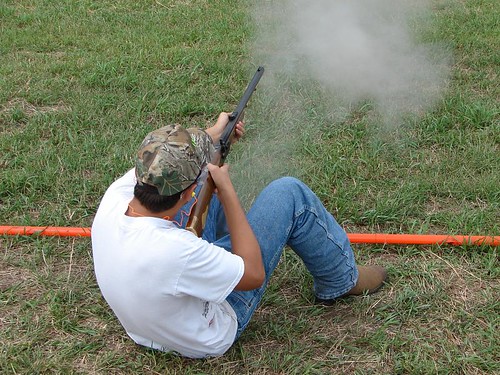 Those tested shot at a full size ground hog target for score and utilized the same paper plate target as used on the twenty-two caliber range to get a feel for the rifle they were shooting and to make any sight adjustments as needed. They shot three rounds at the paper plate and then five at the ground hog target for score. Rifles provided were cap locks and modern in-lines of both bolt and break action types. We even had one kid bring his own muzzle loader to use.
Those tested shot at a full size ground hog target for score and utilized the same paper plate target as used on the twenty-two caliber range to get a feel for the rifle they were shooting and to make any sight adjustments as needed. They shot three rounds at the paper plate and then five at the ground hog target for score. Rifles provided were cap locks and modern in-lines of both bolt and break action types. We even had one kid bring his own muzzle loader to use.
For the archery event, the participants utilized universal recurve bows that are part of the bow hunters education and provided by Kansas Department of Wildlife and Parks. 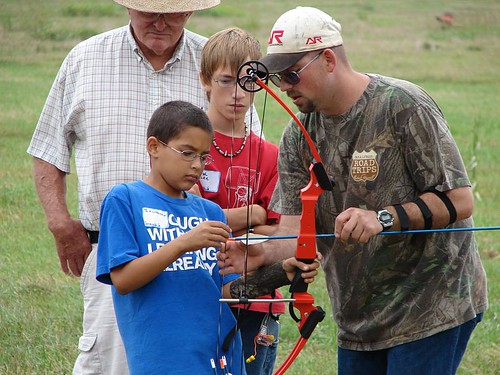 They were given a safety briefing and then provided initial shooting instruction with a brief over view of what they were expected to do. Then they fired a practice round at paper plates hanging on large hay bales. Then, they fired for score at a different target and were also provided with three dimensional targets for score. Many shooters brought their own bows. This was the first time that many had experienced shooting a bow.
They were given a safety briefing and then provided initial shooting instruction with a brief over view of what they were expected to do. Then they fired a practice round at paper plates hanging on large hay bales. Then, they fired for score at a different target and were also provided with three dimensional targets for score. Many shooters brought their own bows. This was the first time that many had experienced shooting a bow.
Awards and trophies were given to; Senior Overall Winner and Junior Overall Winner. These were the highest total score having shot or participated in all events. Then there were trophies given in all events for first, second and third place. All participants were also given a shooters medal for attending the event. Also, a bag full of literature and goodies were given to all.
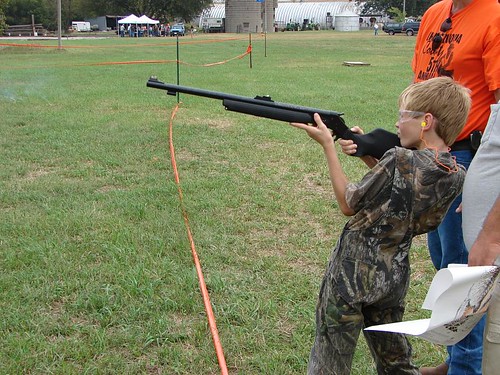 The purpose of this event is to provide a means for all attending to evaluate their shooting skills, hunting and safety knowledge, and experience new shooting types or techniques. This club?s hope and vision is to not only provide this event but to continue the shooting and hunting heritage for future generations. For many, it was the first time that they fired a shot gun, bow, muzzle loader or rifle. We hope that they not only enjoyed the experience, but look forward to getting their own and start making their own memories either afield or on the practice range. It takes a lot of time and volunteers to put on an event such as this. It is through their efforts and dedication that I dedicate this writing.
The purpose of this event is to provide a means for all attending to evaluate their shooting skills, hunting and safety knowledge, and experience new shooting types or techniques. This club?s hope and vision is to not only provide this event but to continue the shooting and hunting heritage for future generations. For many, it was the first time that they fired a shot gun, bow, muzzle loader or rifle. We hope that they not only enjoyed the experience, but look forward to getting their own and start making their own memories either afield or on the practice range. It takes a lot of time and volunteers to put on an event such as this. It is through their efforts and dedication that I dedicate this writing.
Copyright & Published By: Junior Shooters & Junior Sports Magazines Inc. August 2008
Reprinted from Junior Shooters print edition Vol 4 page 36 (click here for pdf file Vol 4).

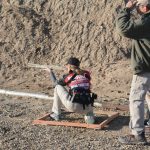
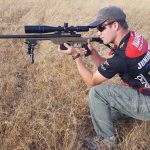
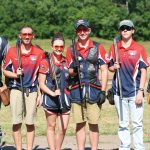
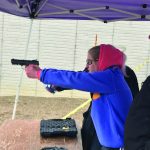
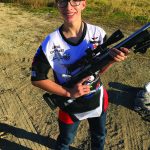
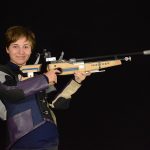

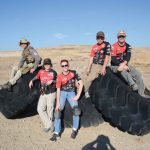
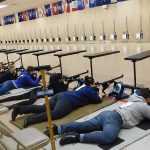
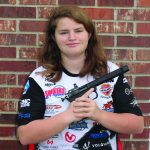
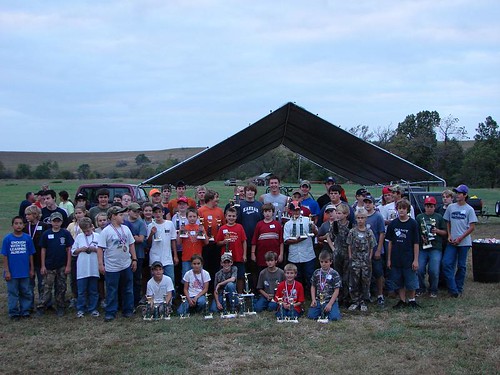
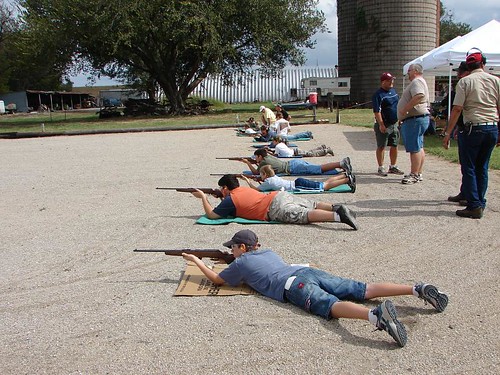

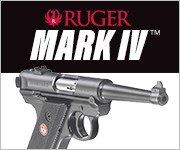
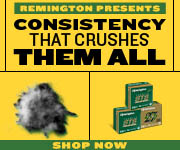
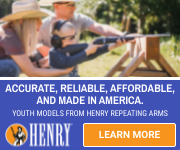

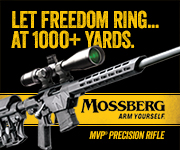
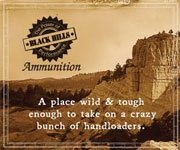
Comments